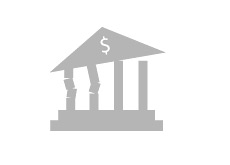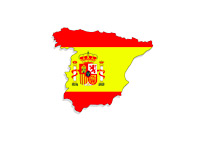702 "Problem Banks" As of December 31st, 2009
 The FDIC (Federal Deposit Insurance Corporation) announced on Tuesday that a total of 702 banking institutions had been included in the so-called "problem bank list" as of December 31st, 2009.
The FDIC (Federal Deposit Insurance Corporation) announced on Tuesday that a total of 702 banking institutions had been included in the so-called "problem bank list" as of December 31st, 2009. This total is up dramatically from the 552 banking institutions that found themselves on the list at the end of Q3 2009, and the 416 banks that found themselves on the list at the end of Q2 2009.
This year-end total of 702 "problem banks" is the highest seen since 1992, when a total of 1,066 banks found themselves on the list.
Here are the numbers from 1990 until 2009 (year-end "problem bank" totals):
2009 - 702
2008 - 252
2007 - 76
2006 - 50
2005 - 52
2004 - 80
2003 - 116
2002 - 136
2001 - 114
2000 - 94
1999 - 79
1998 - 84
1997 - 92
1996 - 117
1995 - 193
1994 - 318
1993 - 575
1992 - 1,066
1991 - 1,430
1990 - 1,496
If you are looking for a list of the 702 banks that comprise the "problem bank list", don't bother. This list is NOT MADE AVAILABLE to the public. I repeat - you WILL NOT find it online.
The reason why the FDIC doesn't disclose this information publicly? They don't want people to start yanking their money out of banks and starting bank runs. Fair or not, that's the way it is.
So what is the "problem bank list"?
Banks are examined every 12-18 months. They are rated on a scale of 1-5, with 1 being the best rating that a bank can have, and 5 being the worst.
These banks are evaluated based on a number of different factors, including: asset quality, capital levels and liquidity. Examiners will be looking for a number of red flags when auditing a bank, including: poor risk management policies, inadequate amounts of cash on hand, increasing delinquent loans, etc.
After the examination is complete, banks are given their rating. If they are given a rating of 4 or worse, then they will find themselves on the "problem bank list". They are also told what steps must be taken to remedy the situation.
Does an appearance on the "problem bank list" mean that a bank is going to fail? No, not necessarily. In fact, most banks that appear on the list don't end up failing.
Does a bank have to appear on the "problem bank list" before it fails? Not necessarily. A bank could, in theory, deteriorate so quickly that it fails before finding itself on the list. This happened to IndyMac Bank in 2008.
A swelling "problem bank list" certainly does mean that there will be continued pressure on the FDIC going forward. A total of 140 banks failed in 2009, which was the highest number since 1992 (181).
The FDIC, which has had to enact a number of measures to replenish their strained insurance fund, reportedly ran a deficit of $20.9 billion in 2009. The FDIC recently required banks to prepay three years of premiums in order to replenish their insurance fund - in addition, they have a large credit line ($500 billion) with the Treasury if they need it.
These 702 banks on the "problem bank list" have a total of $402.8 billion in assets. According to Businessweek.com, this accounts for 8.7% of all lenders.
FDIC chief Sheila Bair has stated that she believes that bank failures in 2010 will surpass last year's total of 140.
Again - the "problem bank list" is not made public, so you don't have any way of finding out whether or not your bank is currently on the list.
Source: Businessweek.com - U.S. "Problem" Banks Soar, Lending Drops, FDIC Says
Filed under: The Economic Meltdown



